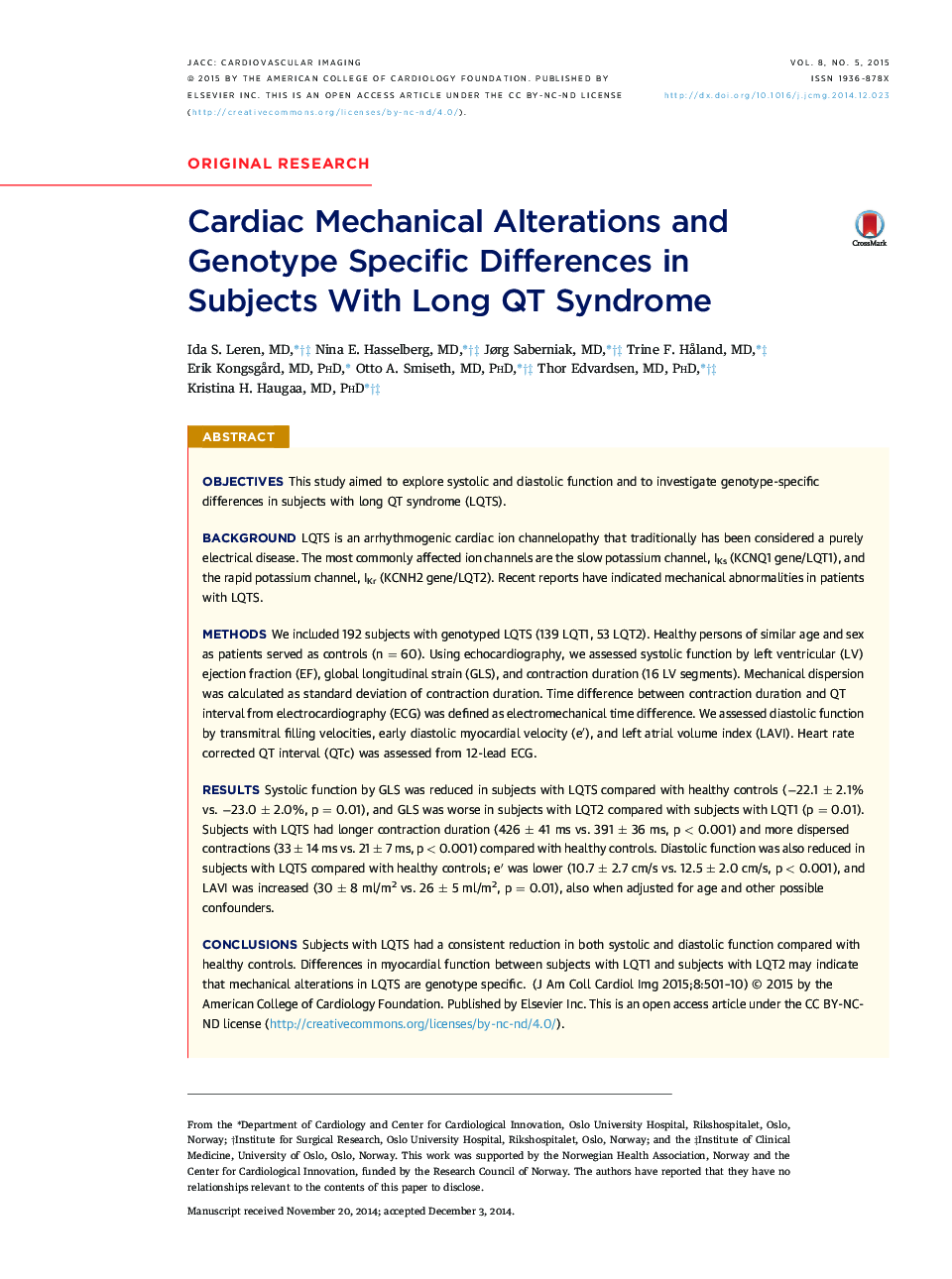| کد مقاله | کد نشریه | سال انتشار | مقاله انگلیسی | نسخه تمام متن |
|---|---|---|---|---|
| 5980110 | 1176906 | 2015 | 10 صفحه PDF | دانلود رایگان |

ObjectivesThis study aimed to explore systolic and diastolic function and to investigate genotype-specific differences in subjects with long QT syndrome (LQTS).BackgroundLQTS is an arrhythmogenic cardiac ion channelopathy that traditionally has been considered a purely electrical disease. The most commonly affected ion channels are the slow potassium channel, IKs (KCNQ1 gene/LQT1), and the rapid potassium channel, IKr (KCNH2 gene/LQT2). Recent reports have indicated mechanical abnormalities in patients with LQTS.MethodsWe included 192 subjects with genotyped LQTS (139 LQT1, 53 LQT2). Healthy persons of similar age and sex as patients served as controls (n = 60). Using echocardiography, we assessed systolic function by left ventricular (LV) ejection fraction (EF), global longitudinal strain (GLS), and contraction duration (16 LV segments). Mechanical dispersion was calculated as standard deviation of contraction duration. Time difference between contraction duration and QT interval from electrocardiography (ECG) was defined as electromechanical time difference. We assessed diastolic function by transmitral filling velocities, early diastolic myocardial velocity (eâ²), and left atrial volume index (LAVI). Heart rate corrected QT interval (QTc) was assessed from 12-lead ECG.ResultsSystolic function by GLS was reduced in subjects with LQTS compared with healthy controls (â22.1 ± 2.1% vs. â23.0 ± 2.0%, p = 0.01), and GLS was worse in subjects with LQT2 compared with subjects with LQT1 (p = 0.01). Subjects with LQTS had longer contraction duration (426 ± 41 ms vs. 391 ± 36 ms, p < 0.001) and more dispersed contractions (33 ± 14 ms vs. 21 ± 7 ms, p < 0.001) compared with healthy controls. Diastolic function was also reduced in subjects with LQTS compared with healthy controls; eâ² was lower (10.7 ± 2.7 cm/s vs. 12.5 ± 2.0 cm/s, p < 0.001), and LAVI was increased (30 ± 8 ml/m2 vs. 26 ± 5 ml/m2, p = 0.01), also when adjusted for age and other possible confounders.ConclusionsSubjects with LQTS had a consistent reduction in both systolic and diastolic function compared with healthy controls. Differences in myocardial function between subjects with LQT1 and subjects with LQT2 may indicate that mechanical alterations in LQTS are genotype specific.
Journal: JACC: Cardiovascular Imaging - Volume 8, Issue 5, May 2015, Pages 501-510